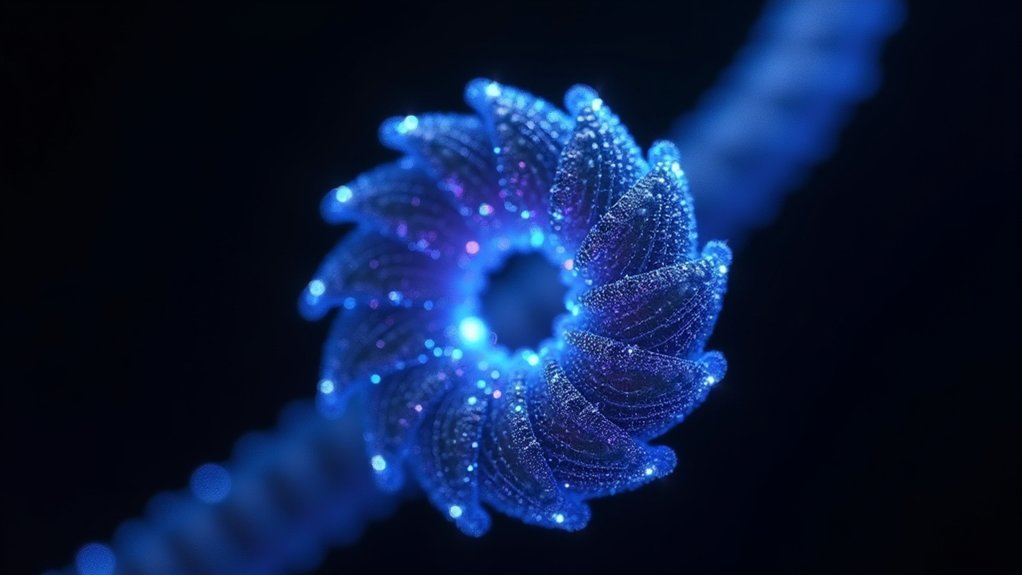Scientists have discovered a mind-bending quantum material that stores data by twisting magnetism in one dimension. Chromium sulfide bromide uses chains of atoms as magnetic switches, operating at room temperature without power-hungry transistors. The material achieves atomic-level storage through quantum states and excitons, with a millimeter-sized crystal capable of holding terabytes. No moving parts, no wear and tear – just pure quantum wizardry. This breakthrough could transform how we think about computer memory forever.

A breakthrough in quantum materials is revolutionizing how we store data. Scientists have discovered that chromium sulfide bromide, a quantum material with peculiar magnetic properties, can store information by twisting its magnetism in a single dimension. This isn’t your grandfather’s hard drive – we’re talking about data storage at the atomic level.
Think about it: one-dimensional chains of atoms, acting like tiny magnetic switches, flipping between “on” and “off” states. No moving parts, no traditional transistors, just pure quantum magic happening in a space so small you’d need an electron microscope to see it. And here’s the kicker – it works at room temperature, unlike those finicky quantum systems that need to be cooled to near absolute zero. These advancements build upon Schoop’s pioneering work in liquid exfoliation methods for producing two-dimensional crystals at scale.
The science behind it is mind-bending. These materials use quantum states and something called excitons – weird little packets of quantum information that scientists can trap and control along these one-dimensional paths. It’s like threading a needle with atomic-sized thread, except the thread is made of quantum information. Pretty neat, right? The development of these quantum storage systems draws inspiration from materials like graphene, which achieves extraordinary conductivity through its hexagonal lattice structure.
But wait, there’s more. These memory cells are based on single-atom defects – literally using missing or altered atoms as data storage points. A crystal the size of a millimeter could potentially hold terabytes of data. That’s your entire photo collection, music library, and probably your neighbor’s too, all in something smaller than a grain of salt.
The advantages over traditional storage are huge. No more mechanical parts wearing out, no more power-hungry transistors. Just efficient, reliable quantum switching doing its thing.
The energy savings alone are impressive – these materials use quantum property manipulation instead of electrical current switching, making them far more efficient than conventional storage methods.
It’s like comparing a Prius to a steam engine, except we’re dealing with something infinitely smaller and more sophisticated. Welcome to the future of data storage – it’s quantum, it’s tiny, and it’s absolutely revolutionary.




